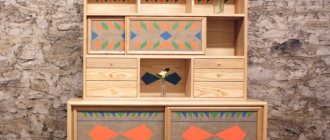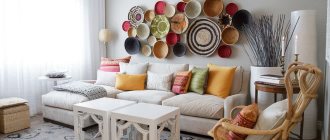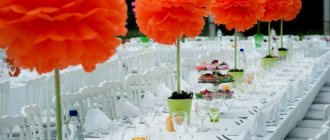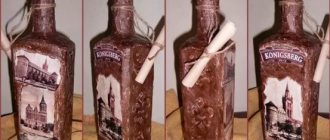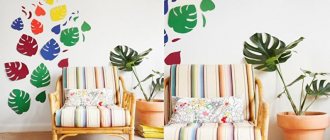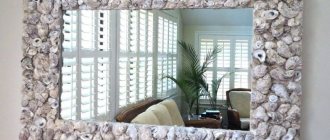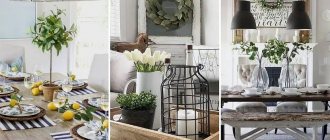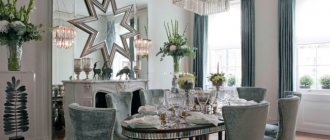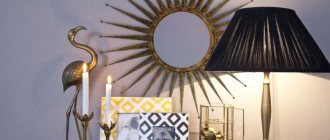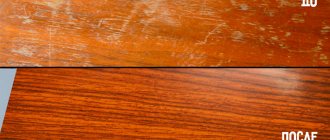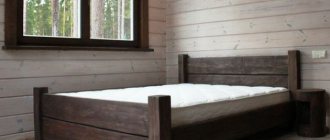Making furniture with your own hands can only be done by real craftsmen, each of whose products is a real work of art. But, sooner or later, the service life of a table, cabinet or bedside table expires: the furniture becomes unusable and loses its appearance. There are other situations: the furniture is still in good condition, but is tired: you want brightness, a holiday, so that the apartment is decorated with original things, and not a dull standard wardrobe, table or chest of drawers. And here a wide field of activity opens up for those who can and want to make things with their own hands.
Self-improvement and restoration of furniture at home has a number of advantages.
The benefits of decorating furniture with your own hands
Self-improvement and restoration of furniture at home has a number of advantages:
- you can choose the most suitable decor that meets your beauty requirements;
- purchasing materials is much cheaper;
- there are no restrictions on the timing of work;
- savings on purchasing new furniture.
Making furniture with your own hands can only be done by real craftsmen, each of whose products is a real work of art.
Deciding on the design
Restoration of old furniture will inevitably entail a change in the design of the room, and here you cannot “just like that” introduce new forms or unusual furniture decorations into the established interior of the apartment, which will stand out from the overall harmony. It is worth noting that there are design techniques that allow you to “fit” a product of another decor into the overall picture of the room’s design.
It is worth noting that there are design techniques that allow you to “fit” a product of another decor into the overall picture of the room’s design.
Before you start decorating, you need to decide on the design and elements of its renovation. For this you can use:
- decoupage;
- glisal;
- fabric, including tulle;
- painting;
- artificial aging using craquelure;
- stencils;
- mosaic;
- self-adhesive film;
- other methods.
Aging is one of the ways to restore furniture in a vintage style.
Each of them has its own advantages, but the home master will decide which one to choose.
There are no restrictions on the timing of work.
Vintage furniture doesn’t fit well with the current decor of most apartments, and this is something that home crafters need to take into account.
Tips for use in the interior
Who said that stucco has no place in a modern interior? It's all about the quantity and design of the elements. Relief decor decorates walls, ceilings, niches, fireplace facades, window and doorways. The shape of the stucco is also different. Let's look at some types.
Socket
Gypsum rosettes are used as a base for a central chandelier. In classic interiors it has a round shape with various ornaments. The options are extensive; in modern style rooms they are found in the form of geometric patterns and abstract shapes.
Plaster rosette on the ceiling
Panel
They decorate part of the wall indoors or outdoors. The variety of drawing subjects allows you to organically fit three-dimensional images into the interior, highlighting a certain wall. If there are defects on the surface, then thanks to the panel they can be hidden.
Plaster panel
Plaster panel
Skirting
One of the most popular stucco forms in interiors of any style. They are used to decorate the junctions between walls and ceilings or floors. By varying the width of the plinth, you visually increase or decrease the height of the ceiling. They are often painted in a color contrasting with the walls, which gives the room solidity.
Ceiling plinth in the interior
Molding
Another popular stucco decor. Smooth moldings without a pattern are suitable for rooms in a minimalist, hi-tech, and modern classic style. Products with various ornaments will look good in Baroque, Art Deco, and Classic styles.
Plaster molding in the interior
Plaster molding in the interior
Cornice
Cornices are most often found in the exterior decoration of buildings, but they are also popular for interior decoration. They emphasize the junction of the wall and the ceiling. In modern apartments, this type of stucco is installed as part of the lighting solution. A space is left between the cornice and the ceiling in which an LED strip or other light sources are placed.
Plaster cornice in the interior
Pediments
We came to interior design from classical architecture. In rooms, pediments are installed above door and window openings, arches, and built-in wardrobes. Traditionally they have the shape of a triangular vault, which is not always appropriate in living rooms. The clear geometry makes the space uncomfortable, and the size of the element allows it to be used only in spacious rooms. In this case, use the option with a gap at the top. The figure becomes less elongated and takes on an interesting shape.
Pediments in the interior
Pediments in the interior
3D panels
Decorative gypsum panels are a trend in modern interiors. They are used to decorate walls, giving them expressiveness and an interesting texture. They are painted and tinted. Thanks to the backlight, the convex parts of the structure emphasize the three-dimensionality.
3D plaster panel
3D plaster panel
Arch
This element is used to decorate door and window openings, to divide space and design niches. Classic ones look like a regular arc. Modern options are presented in a wide variety: square, irregularly shaped, with niches and lighting.
Plaster arch in the interior
Decoupage of old furniture
One of the most interesting decoration options is decoupage. It makes it possible to decorate household items with a variety of images, photographs, and drawings. But most often special decoupage napkins are used for this.
Before you start decorating, you need to decide on the design and elements of its renovation.
The decoupage technique is not complicated, but it requires attention and accuracy, just like any other work. To decorate a product using it you need:
- free the furniture surface from varnish, old paint, drawings, pasted pictures;
- clean it until it is perfectly smooth;
- prime with acrylic paint;
- dry completely;
- then apply PVA glue to the surface;
- carefully place the napkin or other material chosen for decoration;
- To make the furniture shine, the decoupage image and the rest of the surface can be varnished;
- dry completely.
Restoring old furniture will inevitably entail changing the design of the room.
Unfortunately, not everyone can refine furniture by decorating it with original drawings.
Vinyl stickers
The simplest and most cost-effective option for creating an updated design is to use vinyl stickers. Photos of furniture decor clearly demonstrate how many ideas can be realized with their help. Flowers, butterflies, fruits, you can even create a full-fledged composition.
Stickers are used to decorate walls and furniture. Before gluing, you should clean the surface and immediately smooth the decoration. To implement original ideas, you can place an order for individual production.
To make the furniture look more harmonious with the entire room, you can apply similar images of different sizes to the walls. Stickers will help you instantly mask furniture defects. There is no need to apply varnish on top, so over time, decorative elements can be easily removed and replaced.
Restoring a closet using wallpaper
Many people will find the method of decorating old furniture with wallpaper unacceptable, but this is not so. Today the market offers the widest selection of these products, made in various colors and textures, providing the opportunity for flights of fancy to decorate furniture with your own hands. Wallpaper can be used to update any piece of furniture, depending on this, using different materials and patterns. But the most impressive look are cabinets, a large surface of which can be decorated with wallpaper with a spectacular bright pattern.
One of the most interesting decoration options is decoupage.
Interesting details
For many styles, carved decor for furniture is an integral part. Exquisite rooms in Provence, Art Nouveau and country styles. These details are also appropriate in a luxurious classic direction.
But the carved decor looks most natural in a rustic style. Natural color and classic shapes can be complemented with paint, but not to change the color, but to slightly emphasize it.
The technique allows you to create light, lace patterns, but their disadvantage is their fragility. For larger parts, the sawing technique is used, it creates stronger parts. For volumetric compositions, relief technique is relevant.
Carved decor is popular when creating decoupage, and will perfectly complement furniture made of natural wood.
Surface decor with glissal
Some people consider coating products with translucent paint, which is called glisal, glaze, or azure, as a special chic when decorating. With its help you can decorate any surface, including furniture, regardless of whether it is made of wood or glass.
But most often special decoupage napkins are used for this.
It easily “lays” on the material, has no odor, but is distinguished by many color shades. It can be applied with a roller, brush or sponge, just like regular paint. The procedure for using paint is as follows:
- first you need to treat the surface: clean, remove dirt, degrease;
- then apply a primer: on wooden surfaces of furniture - one or two layers, on glass - four to five layers of primer, which creates the effect of frosted glass.
Before use, glisal is diluted with water in the proportions corresponding to the instructions. You can create a drawing within half an hour after applying the mixture; otherwise, it will freeze and it will be impossible to “draw”.
The decoupage technique is not complicated, but it requires attention and accuracy, just like any other work.
Furniture painted with plain paint with a white openwork pattern applied to it using a stencil will look impressive.
Material selection
Stucco molding was used in decorating residential interiors centuries ago, and over many centuries it has not lost its relevance. Nowadays, it is widely in demand when decorating premises in such stylistic directions as classic, baroque and empire; some types of stucco are used even in minimalism and hi-tech.
Any hardware store sells ready-made elements for creating spectacular reliefs, but to make the decor truly unique, some property owners choose individual design.
If you are determined to prepare stucco with your own hands, then gypsum will be the optimal material for this. This choice is explained by the significant advantages of the composition, these include:
- natural origin of the working material;
- environmental safety;
- hypoallergenic;
- resistance to pathogenic microflora;
- water resistance;
- fire resistance.
Working with gypsum is not at all difficult, but all manipulations will have to be performed extremely quickly, since this material hardens within 6-7 minutes, and after another 5 minutes it completely loses its plasticity. Among the disadvantages of gypsum, one can highlight the very impressive mass and fragility of the workpieces. Gypsum is used to create spectacular reliefs on ceilings and walls, and to decorate fireplace portals and columns.
We pay special attention to the fact that before starting work, you need to prepare your workplace.
Of course, it is ideal to use a separate room, but not everyone has such an opportunity. Therefore, it makes sense to take certain precautions, namely to cover the walls, furniture, as well as the floor and other interior items with plastic film - it will be very difficult to remove the composition after it hardens.
set of tools and materials will be used
- gypsum mixture;
- putty;
- spatulas of different sizes;
- ruler;
- sharp knife;
- a glass or any other container;
- modeling tools - spatulas, stacks, knives, and brushes;
- clay or plasticine;
- cement or alabaster;
- PVA glue;
- liquid silicone, as well as a special gun for working with it;
- release agent;
- gauze;
- fine sandpaper.
Advice: if you are going to make stucco for the first time, start with the simplest in shape and small in size products, this way you can get a feel for the material and master the basics of working with it.
Decorating facades with acrylic paints
Using paint is one of the ways to decorate furniture. This is not just “refresh”, as some put it, but an opportunity to ennoble it and breathe new life. In this case, you can not just paint the surface with a single color paint, but paint it with different patterns and apply any ornament. If a home master has the skills of an artist, then his creative imagination will turn an ordinary cabinet or table into a work of art.
Many people will find the method of decorating old furniture with wallpaper unacceptable, but this is not so.
Typically, acrylic paints are used to decorate furniture, which are absolutely harmless to health, bright and rich. But you can also use plain paint so that any piece of furniture will look elegant and impressive. To do this, you can take several colors and decorate the facade in the form of multi-colored stripes of different sizes, squares, triangles, circles, ovals - this does not require much skill. And even if the figures turn out to be not entirely geometrically accurate, they will look very perky.
Many home craftsmen use craquelure to help achieve a cracking effect.
The procedure for decorating with acrylic paints using templates is as follows:
- the surface of the furniture must be cleaned to a perfectly smooth state; if there are any irregularities, sand them;
- paint and let it dry completely;
- attach a stencil and paint it in the appropriate colors;
- carefully remove it and let it dry completely;
- To make the surface of the furniture shine, it needs to be varnished.
But the most impressive look are cabinets, a large surface of which can be decorated with wallpaper with a spectacular bright pattern.
Decorating old furniture is a great chance for a home craftsman to show his creativity and save the family budget.
Creation technology
First, prepare the silicone pattern - clean it from dust and small particles. To make it easier to remove the plaster figure, a release silicone grease is applied to the template. To do this, use a brush to treat the entire surface, leaving no uncovered areas. In untreated areas, the composition will set tightly; removing the hardened product without damage will be problematic.
The prepared solution is poured into lubricated matrices. It is recommended to do this in two steps:
- Apply the first layer of gypsum mixture with a brush. In this case, you need to make sure that there are no air bubbles left. When they burst, depressions and cavities will form on the figure, and the surface will not be uniform and smooth.
- Fill the container to the brim.
Advice! Large-sized works or works with thin parts are recommended to be reinforced with reinforcement. To do this, after applying the first layer of gypsum, a painting mesh is placed in the mold. Then fill the remaining space.
Afterwards, the structure must be gently shaken to release air bubbles. The back part needs to be leveled with a spatula. If it turns out to be lumpy, then fixing it to the wall or ceiling will be unreliable. There will also be noticeable gaps between the figure and the wall. Additional effort will be required to seal the cracks and level them.
The gypsum solution is kept for 20 minutes, after which it is carefully removed. If you do this earlier, the alabaster that has not completely set will be damaged. If left for a longer period of time, the plaster will harden greatly and adhere to the silicone template. Deformations may occur during removal.
The finished part is left to dry for a day. The air temperature should not be lower than +16℃.
Drying finished parts
Coating furniture with craquelure
Many home craftsmen use craquelure to help achieve a cracking effect. It is achieved as follows:
- You need to carefully apply craquelure varnish to the paint that has not yet dried;
- it is prepared from egg white or PVA glue; sometimes vinegar or gelatin is used.
- for the cracking effect to be most vivid, the paint must be applied twice;
- The second layer is applied immediately after the first has dried: then the “cracks” that appear will be visible through the top one.
Some people consider coating products with translucent paint, which is called glisal, glaze, or azure, as a special chic when decorating.
Decoration with fabric
The use of fabric is suitable for decorating various furniture. The material looks unusual on the tree. Pieces of fabric are simply carefully glued on top of the base. This overlay decor for furniture creates a stunning effect.
Additionally, you can use various decor: buttons, decorative cord, beads. To decorate upholstered furniture with fabric, it is enough to reupholster or sew removable covers. It is acceptable to make just a cape or a pile of decorative pillows.
Decorating furniture by aging
Aging is one of the ways to restore furniture in a vintage style. If you plan to decorate it in this way, you need to prepare the furniture as follows:
- sand: first with coarse-grained sandpaper, and then with fine-grained sandpaper;
- You can even not completely wash off the paint on certain areas of the surface, which will enhance the aging effect.
Using paint, you can decorate any surface, including furniture, regardless of whether it is made of wood or glass.
Vintage furniture doesn’t fit well with the current decor of most apartments, and this is something that home crafters need to take into account. Therefore, modern design finds can be included in its design, which will allow it to harmoniously fit into the existing interior.
You can create a drawing within half an hour after applying the mixture; otherwise, it will freeze and it will be impossible to “draw”.
Solution
Preparation of gypsum solution For casting large gypsum products, the solution is prepared in small portions. The thick solution does not flow well and does not completely fill the mold, which has a thin relief.
An adhesive solution – gelatin or flesh solution – can slow down the hardening reaction. Recommended 25% con. It must be used within one day. In addition, the use of an adhesive solution gives the products strength.
Flat products are ground to a flat surface sprinkled with fine gypsum flour and left there for a day.
Stencils for furniture decor
Unfortunately, not everyone can decorate furniture by decorating it with original drawings: not everyone is given the gift of being an artist - not all home craftsmen know how to draw, but there is no reason to be sad: drawings can be applied using ready-made or homemade stencils with various ornaments. The patterns are applied with paint using a template, and they can be fixed with a special varnish.
Using paint is one of the ways to decorate furniture.
Templates can be made:
- from thin plywood, having first applied a pattern to them, and then cut them out with a jigsaw, manual or electric;
- thick paper;
- plain film.
If a home master has the skills of an artist, then his creative imagination will turn an ordinary cabinet or table into a work of art.
In addition, you can use self-adhesive film on which a pattern is applied. It can be cut out along the contour and outlined with a pencil, and then carefully painted. Furniture painted with plain paint with a white openwork pattern applied to it using a stencil will look impressive.
Typically, acrylic paints are used to decorate furniture, which are absolutely harmless to health, bright and rich.
The procedure for decorating using a stencil is as follows:
- the surface of the product is cleaned; if there are irregularities, it is polished;
- all elements are painted over, after which they need to dry completely;
- make a stencil, carefully attach it and paint it with the appropriate color or several colors;
- Carefully remove the template and let the furniture dry completely;
- To ensure that the restored product retains its appearance for as long as possible, it can be varnished.
And even if the figures turn out to be not entirely geometrically accurate, they will look very perky.
Decorating old furniture is a great chance for a home craftsman to show his creativity and save the family budget.
You can take several colors and decorate the facade in the form of multi-colored stripes of different sizes, squares, triangles, circles, ovals - this does not require much skill.
Self-adhesive film
The fastest and most affordable way to update furniture is to use self-adhesive film. Sticky material for furniture decoration is suitable for hard and flat surfaces: stools, tables, chairs, kitchen sets.
There is a huge color palette and a large selection of patterns, which allows you to find the ideal option for the overall interior.
To decorate, you will need a glossy sticky base, degreaser and scissors. The most popular option is with imitation wood. For modern interiors, there are multi-colored bases and complemented with drawings.
Initially, you should get rid of the old paint using a spatula. The surface is washed and degreased. The adhesive base is applied to the furniture in strips.
There is no rush here; the material is applied gradually to avoid wrinkles and bubbles. A roller will help make the work easier; you can use it to smooth out the base.
The excess is trimmed with scissors. You can use two colors, the main thing is that they combine well. For a bright interior, you can choose a combination of bright and neutral shades.
